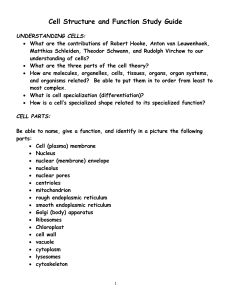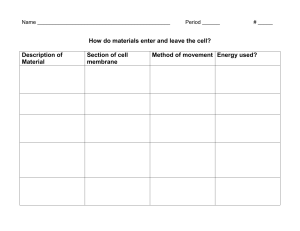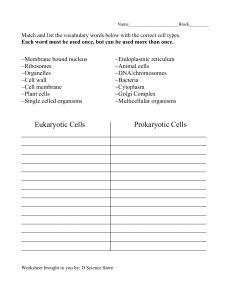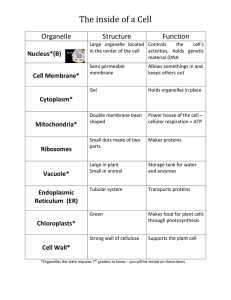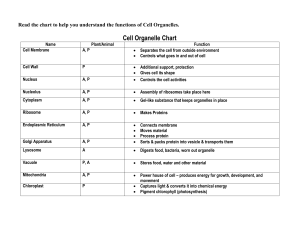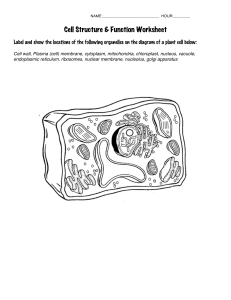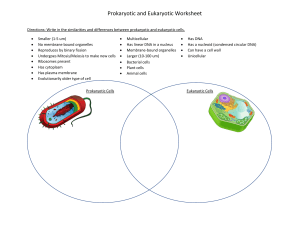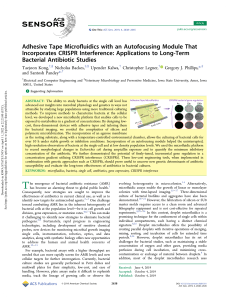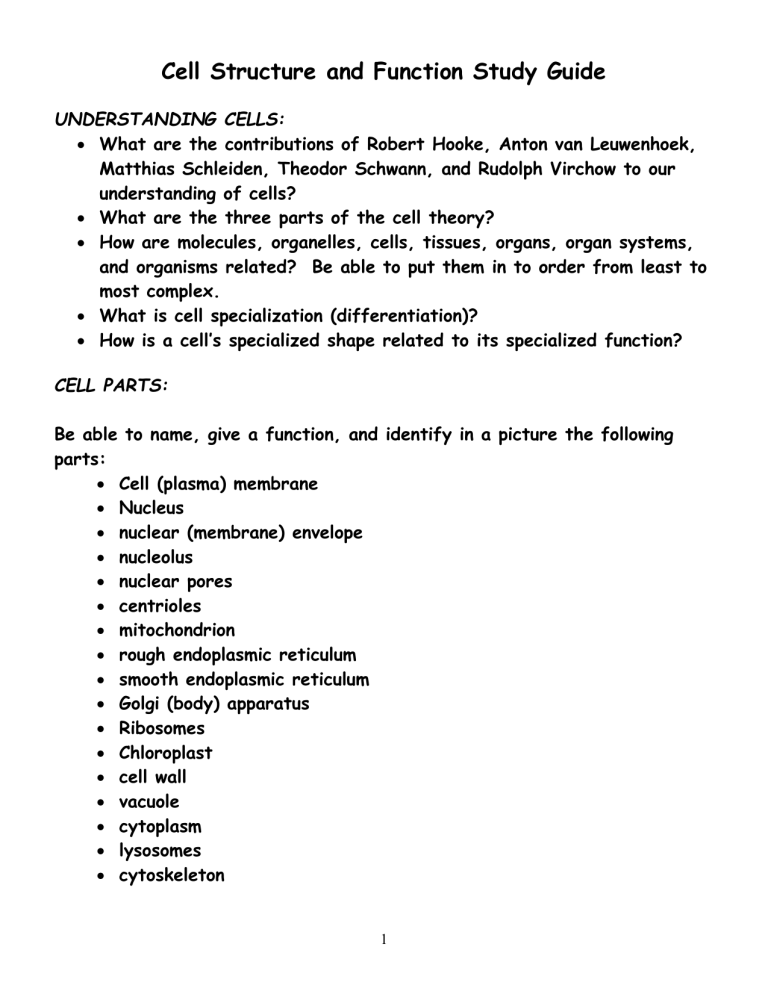
Cell Structure and Function Study Guide UNDERSTANDING CELLS: What are the contributions of Robert Hooke, Anton van Leuwenhoek, Matthias Schleiden, Theodor Schwann, and Rudolph Virchow to our understanding of cells? What are the three parts of the cell theory? How are molecules, organelles, cells, tissues, organs, organ systems, and organisms related? Be able to put them in to order from least to most complex. What is cell specialization (differentiation)? How is a cell’s specialized shape related to its specialized function? CELL PARTS: Be able to name, give a function, and identify in a picture the following parts: Cell (plasma) membrane Nucleus nuclear (membrane) envelope nucleolus nuclear pores centrioles mitochondrion rough endoplasmic reticulum smooth endoplasmic reticulum Golgi (body) apparatus Ribosomes Chloroplast cell wall vacuole cytoplasm lysosomes cytoskeleton 1 Also know: What are these parts made out of? What is a glycoprotein? A phospholipid? A microtubule? Microfilament? Which organelles are made of microtubules? Which organelles have a double membrane and their own DNA? What are cell membranes made out of? What is a lipid bilayer? How are peripheral and integral proteins different? How do the non-polar hydrophobic tails/polar hydrophilic heads in a phopholipid play a role in cell membrane formation? How are chromatin and chromosomes different? Why do cells switch between these? What is APOPTOSIS and what role does it play? COMPARISION: What is a prokaryote? A eukaryote? How are prokaryotes and eukaryotes different? How do plant, animal, and bacterial cells compare in size? How are plant, animal, and bacterial cells alike and different? What organelles are found only in plants? Only in animals? How are bacterial and plant cell walls different? How are cilia and flagella different? Modified from: http://brookings.k12.sd.us/biology/other_units.htm 2

